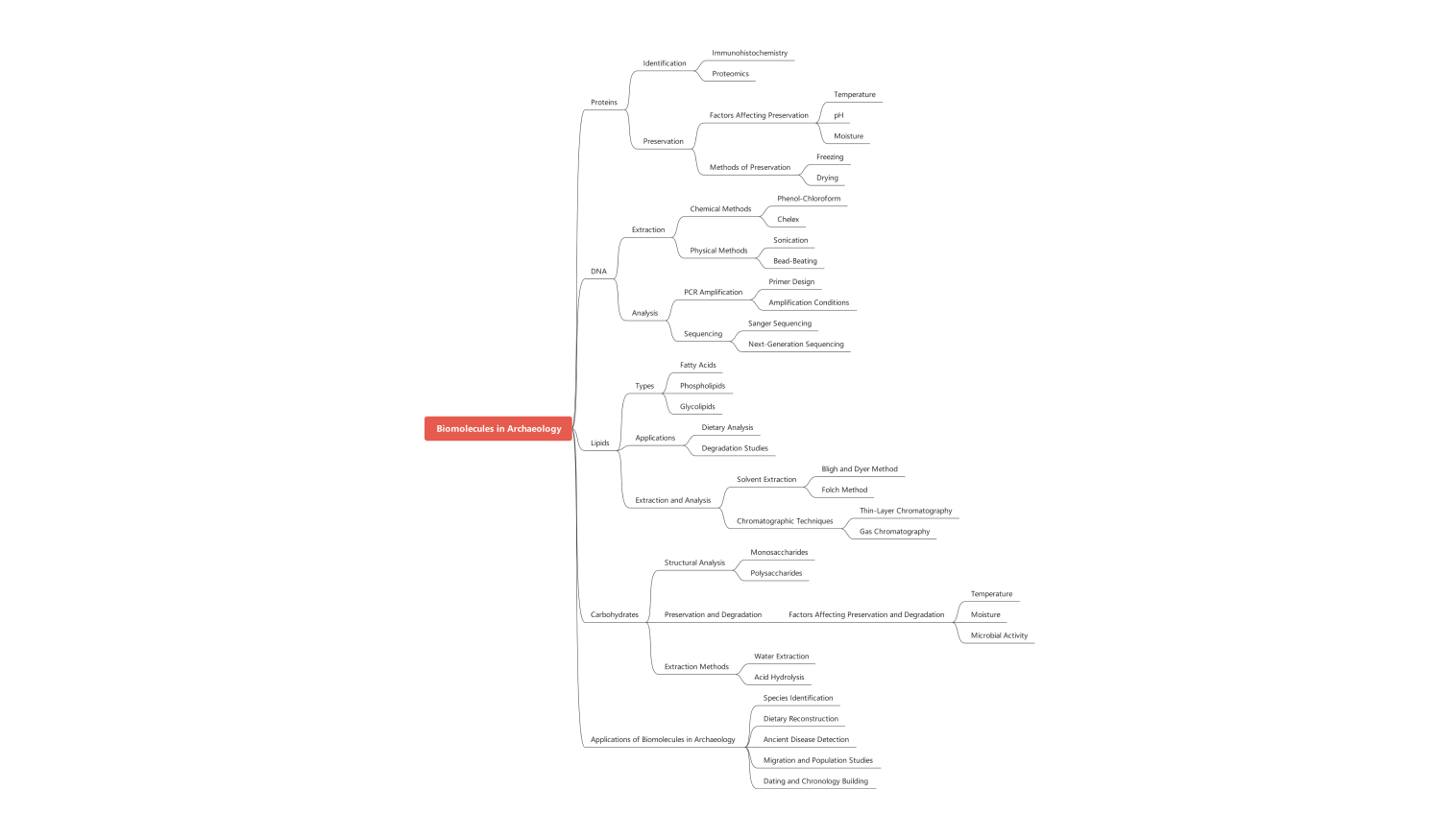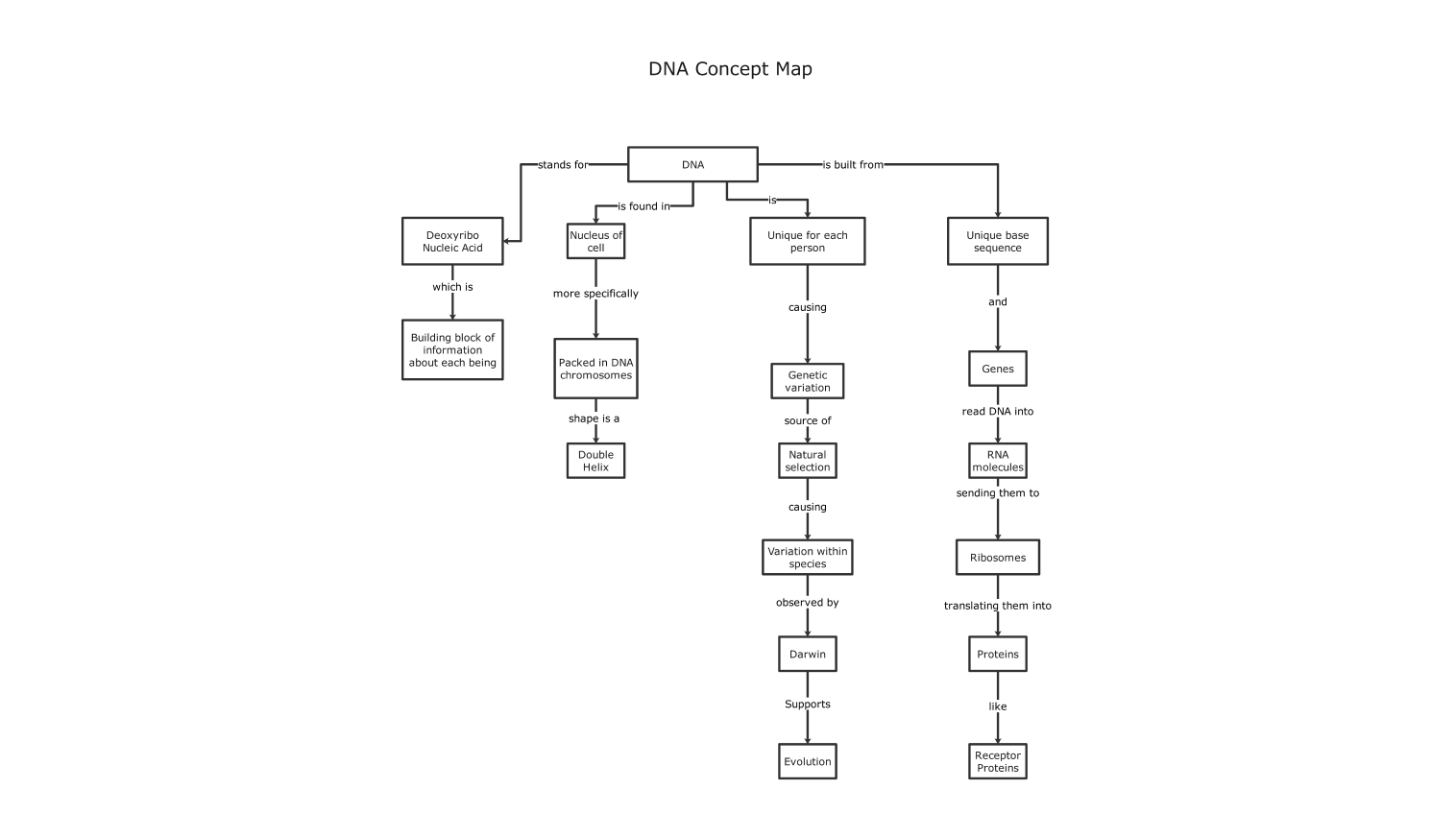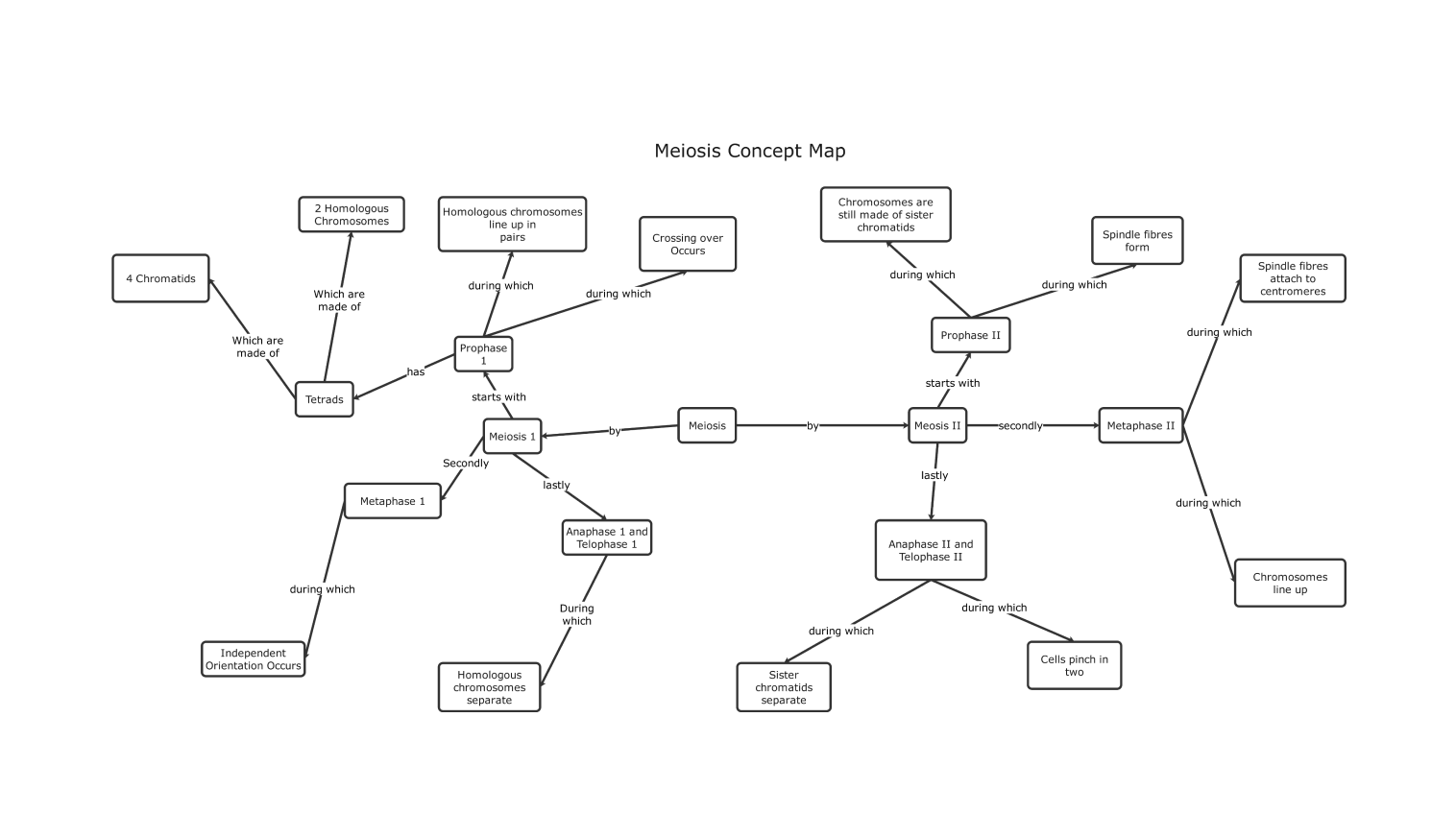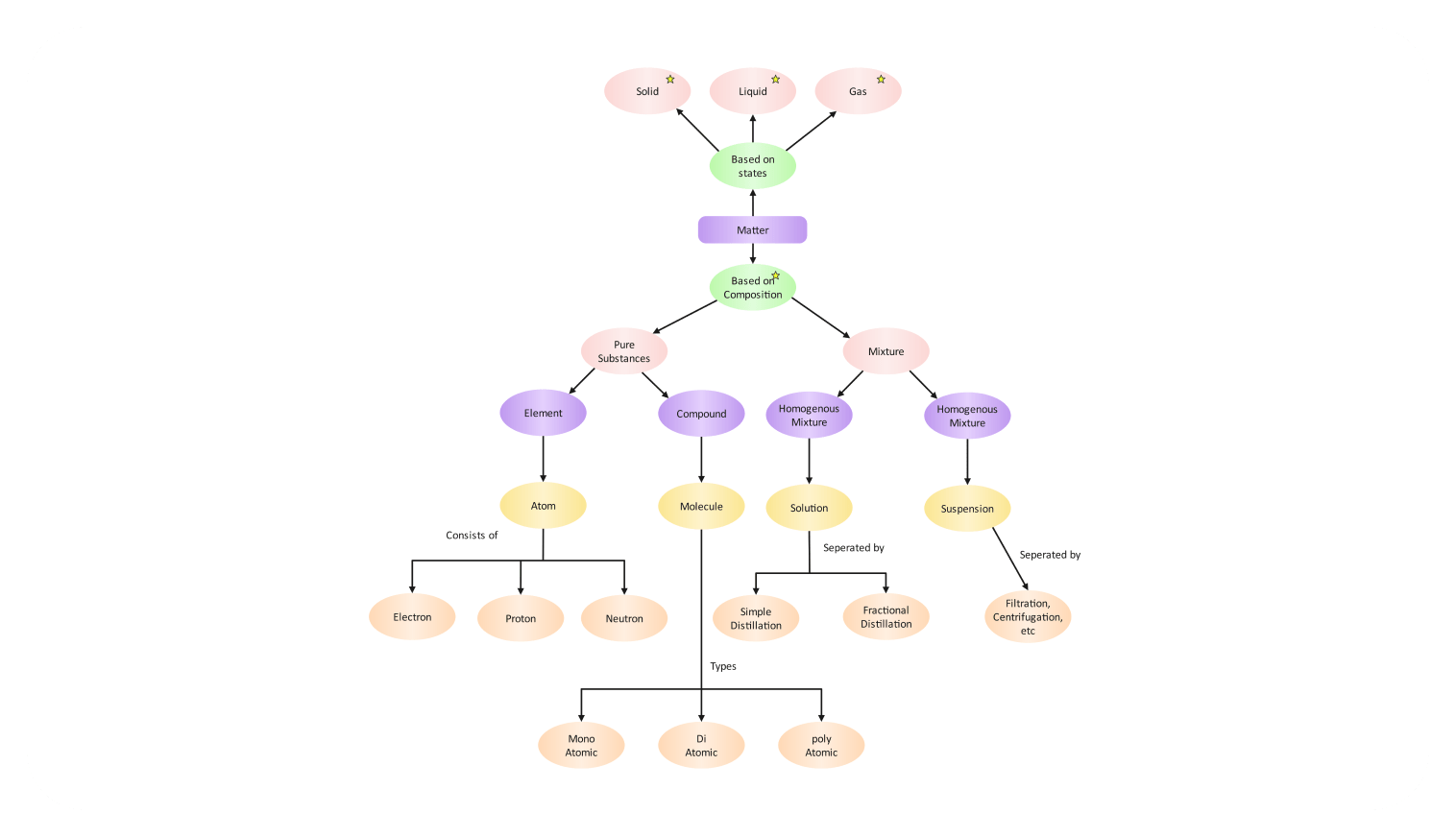- All templates
- Concept map templates
- Biomolecules concept map
About this biomolecules concept map in archaeology
This concept map outlines how biomolecules, such as proteins, DNA, lipids, and carbohydrates, unlock archaeological secrets. It connects lab techniques to ancient insights, highlighting their roles in decoding past lives.
Proteins are identified via immunohistochemistry or proteomics, with preservation shaped by temperature, pH, and methods like freezing. DNA analysis spans extraction, PCR amplification, and sequencing. Lipids, classified as fatty acids or phospholipids, are extracted via solvents and analyzed with chromatography, revealing ancient diets. Carbohydrates, from monosaccharides to polysaccharides, face degradation from microbes and moisture, extracted by water or acid.
These molecules power archaeological breakthroughs: identifying species, reconstructing diets, detecting ancient diseases, tracing migrations, and building timelines. They act as molecular time capsules, bridging millennia through chemistry.
The map simplifies how lab methods intersect with archaeology, turning biomolecular traces into stories of past ecosystems and human lives.
Related templates
Get started with EdrawMax today
Create 210 types of diagrams online for free.
Draw a diagram free Draw a diagram free Draw a diagram free Draw a diagram free Draw a diagram free


